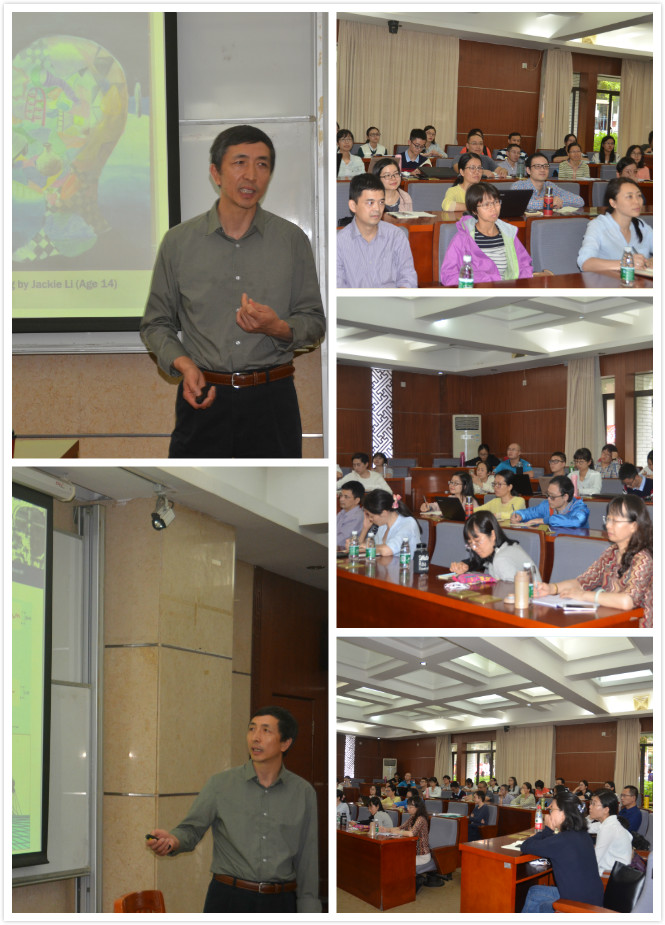Professor Ping Li, director of theBrain, Language, and Computation Lab at the Penn State University, was invitedto deliver a lecture entitled “How Second Language Learning Remodels the Brain”on the afternoon of Nov.13th ,2017.
Prof. Li first presented a general pictureof the new science of learning as a window into the complexity of the brain,which consisted of four interrelated disciplines, i.e., psychology, neuroscience,machine learning and education. Bilingualism as a dynamic process could help sculptthe brain; therefore, the psycholinguistics of bilingualism had come to thefore with research methods like computer modelling, ERP and fMRI techniques. Prof.Li then tried to approach the study of L2 learning with a dynamic view.Specifically, L2 learning was studied by short-term training or longitudinaltracking from four perspectives, viz. brain signatures (functional connectivityand structural changes), individual difference (working memory and cognitive control),learning context (traditional vs. 3D virtual environment) and age effects(early vs. late learning in children and adults). The functional and structuralchanges of the brain induced by L2 learning was reflected in both short-termand long-term learning. In a short-term novel tonal vocabulary trainingresearch using the fMRI technique, his team found that compared to lesssuccessful learners, successful ones showed a more coherent and integratedmulti-path brain network. A similar pattern occurred in the longitudinal trackingof L2 learners. In the study which examined the neural correlates of lexicalprocessing in L2 learners twice over the course of one academic year, theydiscovered that overall activation in control areas such as the anteriorcingulate cortex decreased while connectivity with semantic processing regionssuch as the middle temporal gyrus increased. In the second half of the talk,Prof. Li made a contrast between traditional associative learning and 3Dvirtual learning. 3D virtual environments as embodied experiences provided animportant facilitatory platform that enhanced second language vocabularyacquisition, especially for later stages of learning. He concluded that 1) learningcould rapidly cause functional and structural brain changes which reflected dynamicpatterns; 2) individual differences in learning could be identified by brainnetwork analysis; 3) 3D digital technology-based contexts of learning couldlead to better and sustained brain changes.
During the Q & A session, Prof. Lihad an animated discussion with the audience about the application and prospectof virtual/augmented reality studies.

